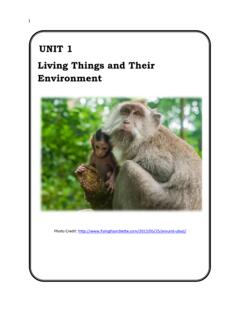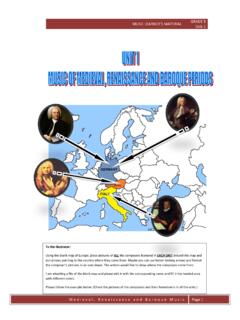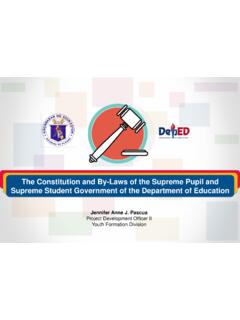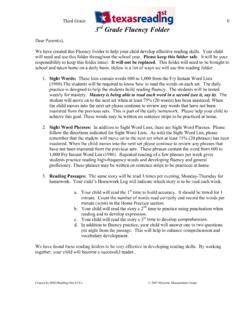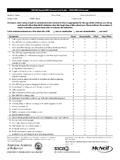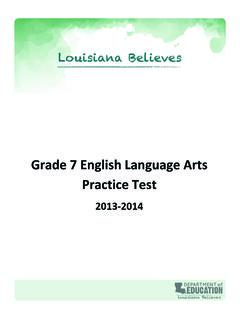Transcription of GRADE 9 MUSIC TEACHER’S GUIDE - DepEd Division of …
1 MUSIC teacher S GUIDE GRADE 9 Unit 1 M e d i e v a l , R e n a i s s a n c e a n d B a r o q u e M u s i c Page 1 To the illustrator: Using the blank map of Europe, place pictures of ALL the composers featured in EACH UNIT around the map and put arrows pointing to the country where they come from. Maybe you can use better looking arrows and format the composer s pictures in an oval shape. The writers would like to show where the composers come from. I am attaching a file of the blank map and please edit it with the corresponding name and fill it the needed area with different colors. Please follow the example below. (Check the pictures of the composers and their hometowns in all the units.) MUSIC teacher S GUIDE GRADE 9 Unit 1 M e d i e v a l , R e n a i s s a n c e a n d B a r o q u e M u s i c Page 2 LEARNING AREA STANDARD The learner demonstrates an understanding of basic concepts and processes in MUSIC and art through appreciation, analysis and performance for his/her self-development, celebration of his/her Filipino cultural identity and diversity, and expansion of his/her world vision.
2 Key - stage STANDARD The learner demonstrates understanding of salient features of MUSIC and art of the Philippines and the world, through appreciation, analysis, and performance, for self-development, the celebration of Filipino cultural identity and diversity, and the expansion of one s world vision. GRADE level STANDARD The learner demonstrates understanding of salient features of Western MUSIC and the arts from different historical periods, through appreciation, analysis, and performance for self-development, the celebration of Filipino cultural identity and diversity, and the expansion of one s world vision. CONTENT STANDARD The learner demonstrates understanding of the characteristic features of the MUSIC of the medieval, the renaissance and the baroque periods. PERFORMANCE STANDARD The learner .. Performs selected songs from the Medieval, Renaissance and Baroque periods.
3 Chants Madrigals Excerpts from Oratorio Chorales Troubadour Time allotment: 8 hours Time allotment: 8 hours Time allotment: 8 hours Time allotment: 8 hours MUSIC teacher S GUIDE GRADE 9 Unit 1 M e d i e v a l , R e n a i s s a n c e a n d B a r o q u e M u s i c Page 3 INTRODUCTION The first three periods of Western MUSIC History are classified as Medieval, Renaissance, and Baroque. Each period has its distinctive characteristics, historical and cultural background. A type of MUSIC from the Medieval Era is Gregorian Chant, which was mainly used in the early Christian church. MUSIC during the Renaissance Period became an important leisure activity. Members of the upper class were expected to have received musical training. Imitative polyphony is the distinctive characteristic of Renaissance MUSIC .
4 The Baroque Period is characterized by grand and elaborate ornamentation of sculptures, theaters, arts and MUSIC . The MUSIC genres which flourished during the Baroque Period were the Concerto, the Fugue, the Oratorio and the Chorale. MUSIC evolved alongside with man s constant quest for growth and development. OBJECTIVES At the end of this module you, as a learner, are expected to: Listen perceptively to selected vocal and instrumental MUSIC of Medieval, Renaissance and Baroque Periods. Explain the performance practice (setting, composition, role of composers/performers and audience) of Medieval, Renaissance and Baroque Periods. Relate Medieval, Renaissance and Baroque MUSIC to its historical and cultural background through dramatization. Sing selections of medieval chants, troubadour songs, madrigals, and oratorios with correct pitch, rhythm, expression and style.
5 Describe musical elements of given Medieval, Renaissance and Baroque MUSIC . Explore other arts and media that portray Medieval, Renaissance and Baroque elements. Allow the learners to read silently or you may call a student to read each objective. (That is when done inside the classroom. However, when at home, be sure these objectives are discussed beforehand.) If possible, discuss each objective briefly. MUSIC teacher S GUIDE GRADE 9 Unit 1 M e d i e v a l , R e n a i s s a n c e a n d B a r o q u e M u s i c Page 4 Improvise appropriate accompaniment to given Medieval and Renaissance songs. Create and perform songs in Gregorian and Troubadour styles. Play simple melodies of a chorale and provide accompaniment. PRE ASSESSMENT To assess what you know about the MUSIC of the Medieval, Renaissance and Baroque Periods, answer the following activities.
6 Part I. Guess Who? You will need: Pictures of different composers Name of the composers written in strips of cardboard. Do as Directed: 1. Divide the class into five groups. 2. Each group will take turns in trying to name each composer until all pictures have been named. 3. Write the name of each composer below the picture. NOTE: These pictures may be placed on the board by your teacher . Remind your students not to proceed to the next activity without going through the pre assessment activity. Read or explain to them what to do in the activity. Have them read and clearly understand the direction/instruction. Time allotment: 20 minutes Remind your students not to proceed to the next activity without going through the pre assessment activity. Read or explain to them what to do in the activity.
7 Have them read and clearly understand the direction/instruction. MUSIC teacher S GUIDE GRADE 9 Unit 1 M e d i e v a l , R e n a i s s a n c e a n d B a r o q u e M u s i c Page 5 _ Johann Sebastian Bach Giovanni Pierluigi da Palestrina George Friedich Handel Antonio Vivaldi MUSIC teacher S GUIDE GRADE 9 Unit 1 M e d i e v a l , R e n a i s s a n c e a n d B a r o q u e M u s i c Page 6 Gregorian Chants Mass Fugue Concerto Grosso Troubadour MUSIC Oratorio Madrigal Chorale Part II. Guess When? Direction: Classify the items in the box according to the historical period to which it belongs. Write the words in the column below. Listen to the following songs: 1. Canon Rock Last viewed November 7, 2013 2. Canon in D by Pachelbel Last viewed November 7, 2013 Look for other songs which were originally composed during the Medieval, Renaissance or Baroque periods that have been revived today.
8 They may have been used as background MUSIC for commercial, movie, teleserye , and other media purposes. REFLECTION: MEDIEVAL PERIOD RENAISSANCE PERIOD BAROQUE PERIOD Gregorian Chants Mass Concerto Grosso Troubadour MUSIC Madrigal Fugue Oratorio Chorale MUSIC is timeless. Melodies from the past can still be heard today. Tunes may be played differently in the techno world, but one thing never changes, MUSIC will always be part of man s everyday life . The following additional pre assessment activity may be done at home. Discuss their work the next meeting informally, just to get a feel of connection from the past to the present. MUSIC teacher S GUIDE GRADE 9 Unit 1 M e d i e v a l , R e n a i s s a n c e a n d B a r o q u e M u s i c Page 7 1. Were you aware that some of those MUSIC were composed centuries ago?
9 2. How was it used as background MUSIC ? 3. Do you think they were used creatively? Was the MUSIC used appropriately? 4. If you were one of the original composers, would you allow your compositions to be used as they are used today? Why or Why not? WHAT TO KNOW MUSIC of the Medieval Period (700 1400) The Medieval period is also known as the Middle Ages or Dark Ages that started with the fall of the Roman Empire. During this time, the Christian Church influenced Europe s culture and political affairs. Monophonic plainchant was named after Pope Gregory I, who made this the approved MUSIC of the Catholic Church. Pope Gregory s action made monophonic plainchants popular. Although it was originally transmitted orally, In this module, you will learn the first part of the history of Western MUSIC . We will be discussing the characteristic features of each period, composers, historical and cultural backgrounds.
10 Audio and Visual selections used in this module are limited but pre - selected. If available and within the allocated time, you may use additional materials. But be sure, you have already maximized what was used and listed in this module. Time allotment: 2 hours and 30 minutes MUSIC teacher S GUIDE GRADE 9 Unit 1 M e d i e v a l , R e n a i s s a n c e a n d B a r o q u e M u s i c Page 8 scholars agreed to put it in notation to assist dissemination of chants across Europe. Characteristics of the Gregorian Chants: monophonic Free meter Modal Usually based on Latin liturgy Use of Neume notation MUSIC teacher S GUIDE GRADE 9 Unit 1 M e d i e v a l , R e n a i s s a n c e a n d B a r o q u e M u s i c Page 9 The MUSIC sheet below is a notated Gregorian Chant written in Neumes: Description: The Introit Gaudeamus Omnes, scripted in square notation.
